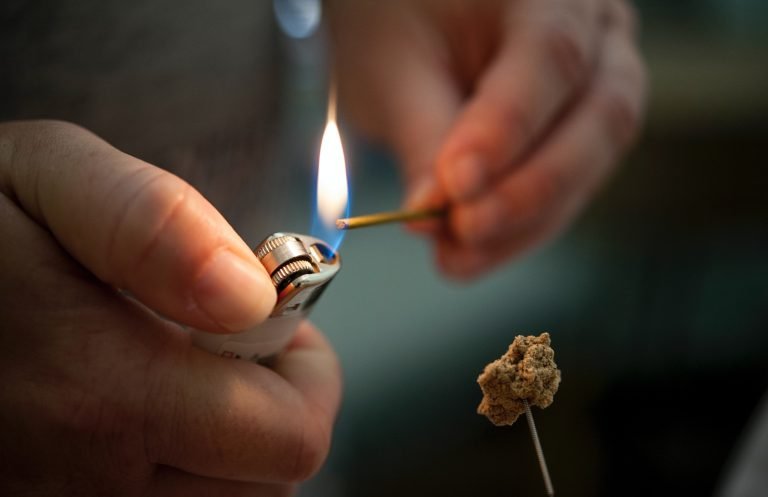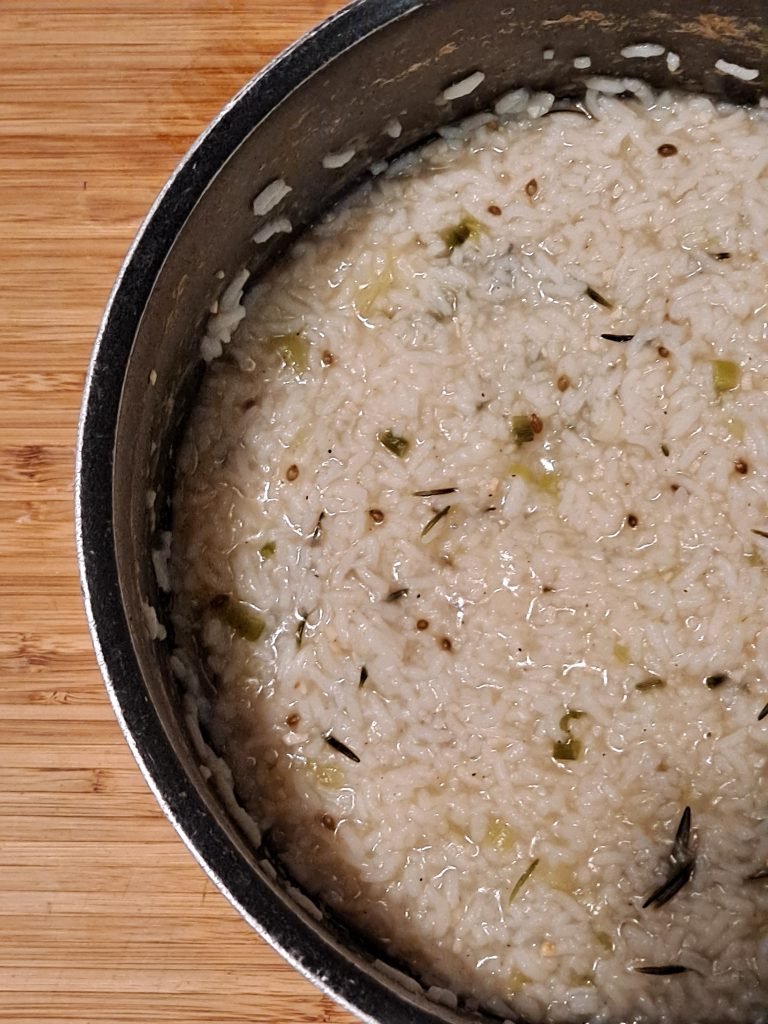In 2012 I had the opportunity to go to Beijing, China to study the Chinese language. It was here, with my host family, where I tried congee for the first time. For our meal, each person received a bowl of congee and different meat and vegetable dishes were placed in the middle of the table. We would all reach for food in the middle, bring it to our congee bowls, and eat them all together. It was delicious! Now, when it’s cold outside, my digestion is not feeling great, or I feel a cold coming on, I make congee, my favorite Chinese food.
Congee is a rice porridge with a high liquid to rice ratio, cooked slowly over about 2 hours. It was first recorded around 1000 BC during the Zhou dynasty (1). Different versions of it are made in almost every country in Asia and it is known by many different names. In Chinese, it’s name is zhōu (粥) where the rice radical (米) can be seen in the center. The term we use, congee, originates from the Tamil word for boil: kanji. Tamil is a language spoken in India and Sri Lanka (2).
The long cooking time of congee breaks down the rice into something that is easy for the body to digest and absorb. The added herbs increase its medicinal properties. As stated in the book Nutritional Healing with Chinese Medicine by Ellen Goldsmith, congee “benefits those who are tired, cold, have low appetite and poor digestion, or in Chinese medicine terms, those that are qi, blood or yang deficient. Such soups… are most beneficial for those recovering from a long illness who still feel fatigued…. They are also excellent for older people, children and those who have digestive or malabsorption problems” (3).
One of the most important books on classical Chinese medicine, The Discussion of Cold Damage (Shang Han Lun), the author Zhang Zhongjing lists herbal formulas and how to use them. On line 12 is my favorite herbal formula, Gui Zhi Tang (pronounced gway jur tahng), the Cinnamon Decoction. Indications for this formula, as stated in this line, include a fever, spontaneous sweating, aversion to cold, aversion to wind, sneezing, hoarse breathing, and dry retching. Once administering the Gui Zhi Tang, line 12 states that
“Shortly after administering the decoction, give warm and thin rice porridge [congee] to reinforce the effect of the decoction. Cover the patient with a blanket for about two hours, and it would be best if slight and continual sweating is promoted.”
discussion of cold damage, line 12
Shang han lun
In this condition, warmth is needed to drive out the cold pathogen through sweating. Congee works with the Gui Zhi Tang formula to warm the body from the inside, with a blanket warming the body on the outside, thus promoting sweating and helping the person to heal.



Congee is made several different ways and below is how I make it. Afterward I will mention other alternatives to the recipe that can be added or changed depending on personal preference, what is available, and what medicinal benefits you seek from your congee.

Sasha’s Congee
Ingredients
- 1 cup white rice
- 6 cups liquid I usually put in 1-2 cups of broth with the remaining 4-5 cups being water
- 1-2 green onions chopped
- 1-1.5 tsp ginger grated or paste
- 1-4 tsps minced garlic I really love garlic and so I add as much as I reasonable can
- 1-2 tsp rosemary or one 6-inch branch
- 1 tsp thyme or one 6-inch branch
- 1-2 tbsp coriander seeds This is my secret ingredient. A bite of congee with a coriander seed is a special experience every time!
Instructions
- Add all the ingredients to a pot.
- Bring the pot to a boil, turn the temperature down, and let it simmer with the lid tipped to let some steam escape.
- Cook, stirring occasionally to prevent burning or sticking to the sides of the pot. Cook for 45 minutes to 1 hour 30 minutes, until it is the consistency of a porridge.
- Eat plain or add toppings (discussed below). Store in the fridge for about 4 days.
Notes
- White rice is most commonly used in congee, but brown rice, millet, and barley can be used.
- Any of the herbs mentioned above are all optional. A very common form of congee is just white rice, water, and maybe some salt and pepper. It’s pretty bland – which can be good for certain conditions, but not enjoyable for most situations. I have found that these combinations of herbs and broth create a more flavorful congee that feels good for my taste buds and body. If you do not have these herbs or wish to try different ones, go for it! A friend of mine likes to add a handful of mung beans to her congee to add more nutritional benefit and protein.
- Braised, sauteed, roasted, or pickled veggies
- Eggs cooked sunny side up, scrambled, hard cooked
- Toasted nuts or seeds
- Chopped pungent herbs (basil, parsley)
- Meat and fish
Let me know if you make it and what herbs and toppings you choose to put on it!
Sources:
- Lim L. Where the word congee comes from the answer may surprise you. Published November 10, 2017. Accessed November 2023. https://www.scmp.com/magazines/post-magazine/article/2119163/where-word-congee-comes-answer-may-surprise-you
- Congee. Wikipedia. Updated November 23, 2023. Accessed November 2023. https://en.wikipedia.org/wiki/Congee#:~:text=The%20original%20Chinese%20name%20for,similar%20dishes%20and%20names%20appeared.
- Goldsmith E. Nutritional Healing with Chinese Medicine. Robert Rose Inc.: 2017.








+ There are no comments
Add yours